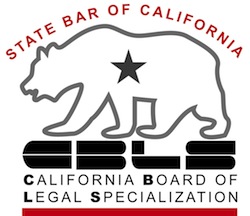Tax liens are no match for Chapter 13 when it comes to cutting the lien down to its real value.
On paper, a tax lien can quickly become huge.
In bankruptcy however, a lien is no bigger than the value of the assets it attaches to.
While in Chapter 7, liens pass through bankruptcy without change, in Chapter 13, liens are valued, then dealt with under the Chapter 13 plan.
The secured portion of the lien, that part of the lien for which there is collateral with value, is paid through the plan. The unsecured portion is treated according to the standard rule for taxes.
Any unsecured portion of the lien that is a priority tax is paid according to its priority. If the tax year for the unsecured portion of the lien is not priority, it’s paid (or not paid) just like any other general unsecured claim.
Understanding tax liens
Tax liens attach to all the assets the taxpayer owns when the lien is filed, and to all assets acquired while the underlying tax is collectible.
Exemptions, either in bankruptcy, or under state law, don’t save assets from a tax lien. The lien trumps the exemption.
The recorded lien reflects that amounts due on the tax years in question at the time the lien was recorded. The actual amount due for the liened tax year depends on how much interest runs after recordation and whether payments are made to reduce the tax due.
Tax liens remain valid only as long as the tax that they secure remains collectible. Taxes aren’t forever: they can be discharged in bankruptcy or they can die of old age by reaching the IRS 10 year statute of limitations.
When the tax liability expires, the lien expires too.
Valuing a tax lien
So, how does Chapter 13 treat tax liens?
First, the debtor’s schedules give a value to each of the debtor’s assets. Large assets, like houses and vehicles, are generally listed and valued individually.
Assets like household goods and clothing are lumped into a category and a value is provided for that category of assets.
Second, any liens on assets that were created before the tax lien are subtracted from the value of the asset. If a positive number results, that portion of this asset’s value is collateral for the tax lien.
Add up all the equity from the debtor’s assets, and that’s the amount of the tax lien that is genuinely secured.
Third, draft a plan that pays the secured amount of the IRS claim through the plan.
Chapter 13 at work
Let’s look at an example of how Chapter 13 cuts tax liens.
Suppose the tax lien totals $150,000 when the bankruptcy is filed. Five thousand dollars of that lien is taxes that are priority (generally, taxes that are less than 3 years old); the $145,000 balance is for taxes, interest and penalties that are older than three years old.
The debtor owns a house worth $450,000 and has a mortgage of $400,000 and unencumbered equity in the home of $50,000.
The balance of the debtor’s assets are worth $10,000.
The secured tax lien is $60,000, the equity in the house ($50,000) plus the value of the rest of the debtor’s property ($10,000).
The unsecured portion of the tax lien is $90,000 ($150,000-$60,000).
The $5,000 portion of the tax lien that secures the recent tax year is a priority.
So, roughly speaking, paying $65,000 ( the secured portion of the lien plus the priority tax) in monthly payments over 5 years eliminates the tax lien at the end of the plan. (This assumes that the tax lien for older tax years is senior in priority to the recent non-dischargeable taxes).
Your mileage may vary
My example assumed there was equity in real property and that the tax lien was substantial.
If your assets are worth less or the tax lien is smaller, killing off tax liens through Chapter 13 is cheaper still.
Getting free of tax troubles is one of my favorite reasons to like Chapter 13.






